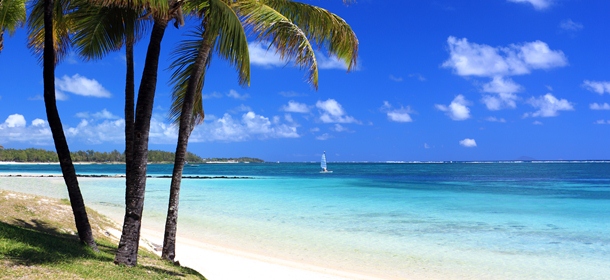The tropical island of Mauritius is known as ‘The Pearl of the Indian Ocean’ although it was actually named after Dutch Prince Maurice Van Nassau. Mauritius has become even more renowned not only because of its natural beauty and breathtaking landscapes but also because of the legendary kindness and hospitality of the Mauritian people, a fascinating mixture in their own right. The coastline of 330 kilometres is almost entirely surrounded by one of the largest unbroken coral reefs in the world and its proximity to the Tropic of Capricorn assures Mauritius a typically warm and sub-tropical climate. The contrast of colours, cultures and tastes makes the island so charming that the scene is set for an unforgettable holiday. Here, you have the opportunity to experience unparalleled luxury: a level of refinement that is head and shoulders above that on offer in other tropical holiday destinations. Here, you will discover the true meaning of ‘beauty’ – a realisation that will compel you to return to Mauritius’ shores time and again. As well as a holiday destination in its own right (especially for honeymoons) it also makes a fantastic beach extension to a holiday in Southern Africa and in particular with South Africa with its easy connections.
The island, with a surface area of 2,040 square kilometres, is located 20º south of the equator and 57.5º east. English is the official language, although French and Creole are commonly used. With a population of 1.2 million, the literacy rate hovers around 90% which is very high indeed. Mauritius is also an exciting melting pot of cultures. Hinduism, Christianity, Islam and Buddhism all manage to co-exist peacefully and the island is home to many religious celebrations and festivals throughout the year.
Mauritius has a very stable democracy and a booming economy based on four main sources of income: tourism; sugar; textiles and the services sector. Port Louis, the capital of Mauritius, was founded by the French governor and colonist Bertrand-François Mahé de La Bourdonnais in 1735. Situated on the west coast, it is protected by a curve of picturesque mountains. International businesses and financial institutions rub shoulders with colourful markets in this vibrant city making it a great destination for a day trip away from the beach.
Mauritius has a wonderful climate making it a great holiday destination all year round. The wettest months are from December to March. Summer is from November to April with average temperatures around 23ºc to 33ºc. The sea temperature averages a very pleasant 22ºc to 27ºc in the summer. Winter in Mauritius runs from May to October with average temperatures around 17ºc to 23ºc.
Mauritius’ white beaches are protected by a coral reef barrier that encircles almost all of the island, with the exception of the southern end, where it falls away and where wilder waters and dramatic cliffs can be observed. From the northern plains, the land rises to a central plateau dotted by lakes and extinct volcanic craters. A few uninhabited islets area are scattered around the main island. The island is divided up into distinct areas.
The North – The north provides some fine beaches, a great range of accommodation and restaurants, world-class water-sports facilities, wonderful shopping opportunities and entertainment. It was one of the first spots in Mauritius to welcome holidaymakers.
The South and South-East – This region has a completely different landscape to the rest of the island. Gris Gris, for example, is one of the few areas of Mauritian coastline that is not shielded by coral reef and is therefore the best point from which to observe dramatic waves crashing against the rocks.
The East – Some of the best beaches in Mauritius can be found on the east coast, including Blue Bay and its nationally protected marine reserve and the delightful swathes of sandy beaches that exist around Belle Mare. Also here is Trou d’Eau Douce: the main departure point for day trips to the islet Ile aux Cerfs.
The West – The west and south-west of the island are an adventure playground for nature and sports-lovers. Flic en Flac, with its white beaches fringed with Casuarinas trees, is a popular location for weekend beach activities such as swimming and snorkelling. Grande Rivière Noire and Tamarin were fishing villages that have been transformed with luxury villas and are now popular deep-sea finishing spots.
